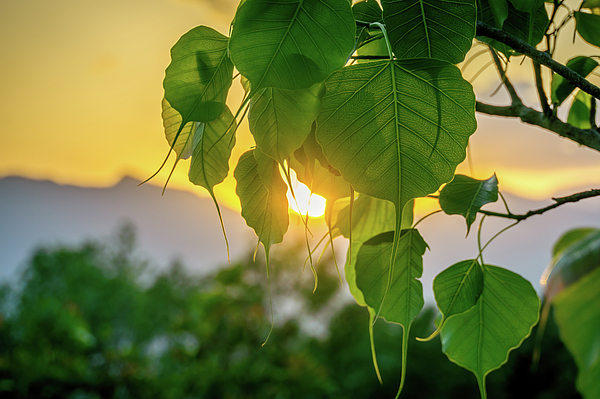Peepal tree (Ficus religiosa) is worshipped in Indian culture since ages. In India, this tall tree with wide canopy that goes with various names such as: Ashwatha vriksha, peepal vriksha, Boddhi vriksha etc. It is the oldest historical tree in the world that holds a major religious significance.
It is not only known for emitting oxygen but also has medicinal benefits as well. Different parts of the peepal tree such as: bark, leaves, stem, roots and fruits are used widely to manage the conditions like issues related to the digestive tract, asthma, skin related issues, high blood sugar levels etc.

Peepal Tree in Ayurveda:
In Ayurvedic texts, immense medicinal and therapeutic benefits of peepal tree have been described.
Medicinal Properties of Sacred Fig:
- Rasa (Taste): Madhura (Sweet) and Kashaya (Astringent)
- Veerya (Potency): Cold
- Vipaka: Katu (pungent)
- Guna (Qualities): Kapha-Pitta Shamak (reduces vitiated Pitta and Kapha doshas)
- Part used: Tender leaf, bark, latex and fruit
- Dosage: Powder: 3-5 g Decoction: 50-100 ml
- For Eczema and Itching: Due to its anti-inflammatory property, it is helpful in reducing inflammation due to eczema.
- For eczema and itching, take 50 gm peepal bark ash and add lime and desi ghee in equal proportion to make a paste.
- Apply this paste on the affected areas. This mixture will provide soothing effect.
- Taking 40 ml tea prepared from peepal bark regularly is also very useful in the conditions of eczema and itching.
- For a brighter complexion: Peepal leaves are considered as a natural blood purifier which in turn makes the skin glowing and radiant.
- Peepal tree bark extracts are enriched with Vitamin K which helps in restoring clear and brightened complexion.
- The tender peepal leaves are made into paste and applied over the skin to get the original skin tone.
- This paste along with gram flour and water can be applied as face pack.
- For best results, apply this face pack twice a week for a brighter complexion and to fight wrinkles.
- For Cracked Heels: Cracked Heels are not only painful but embarrassing as well.
- For cracked heels, apply the juice of peepal leaves and massage it gently for softening the affected area.
- For Blood Purification: The cold infusion or decoction prepared from the bark or fruit is consumed in the dose of 50 ml to treat skin diseases as it acts as a blood purifier.
- Diarrhoea: Peepal bark is widely used for digestive health in Ayurveda.
- For bleeding diarrhoea, take some soft stems of peepal, coriander seeds and crystal sugar and mix them well.
- Take 3-4 grams of this mixture twice a day.
- Abdominal Pain: Make paste of 2-3 fresh peepal leaves and mix this paste with 50 gm jaggery and make small balls.
- Take these balls 3-4 times a day.
- This remedy will soothe abdominal pain.
- Peepal leaves in the form of powder might be used to treat constipation due to its laxative property.
Some Ayurvedic formulations containing Peepal are:
- Sarivadyasava: Sarivadyasava is an Ayurvedic preparation that is prescribed for skin complications, gout, skin infections, rheumatism, diabetes, diabetic carbuncles etc.
- Panchavalkaladi Tailam: It is an Ayurvedic oil used externally to treat skin disorders such as eczema and dermatitis.
- Nalpamaradi Tailam: It is also an Ayurvedic herbal oil used for the treatment of herpes, eczema, scabies, allergic skin disorders such as ring worm infestation.
The use of Peepal for medical purposes should be used under medical supervision only as it can cause allergies in some hypersensitive individuals.
Disclaimer:-
This article is not a substitute to the standard Medical Diagnosis or personalized Ayurvedic Treatment! It is intended only for Information!
For experts consultation, please write us at care@blessayurveda.com.
1,312 total views, 2 views today